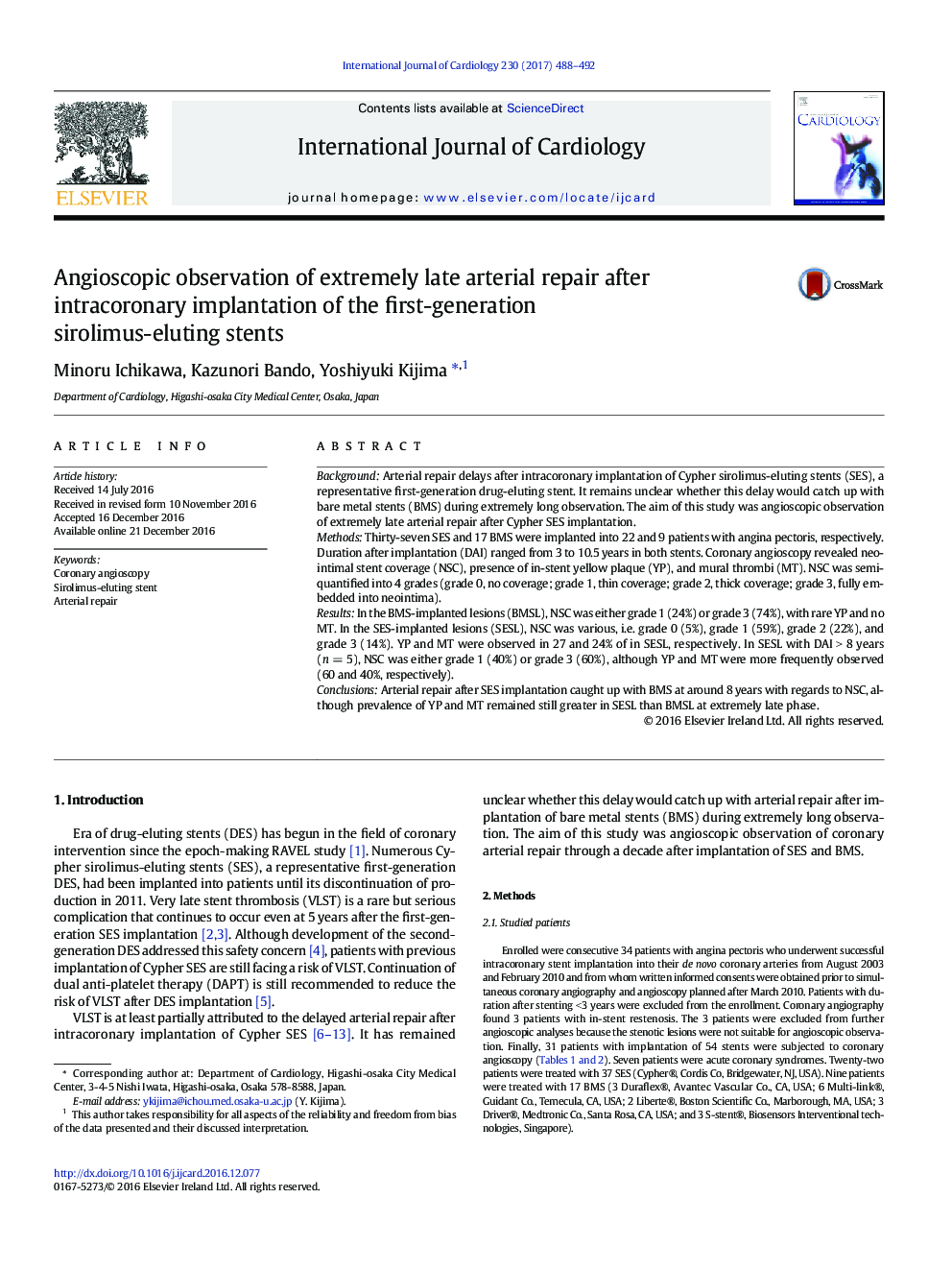| Article ID | Journal | Published Year | Pages | File Type |
|---|---|---|---|---|
| 5604811 | International Journal of Cardiology | 2017 | 5 Pages |
BackgroundArterial repair delays after intracoronary implantation of Cypher sirolimus-eluting stents (SES), a representative first-generation drug-eluting stent. It remains unclear whether this delay would catch up with bare metal stents (BMS) during extremely long observation. The aim of this study was angioscopic observation of extremely late arterial repair after Cypher SES implantation.MethodsThirty-seven SES and 17 BMS were implanted into 22 and 9 patients with angina pectoris, respectively. Duration after implantation (DAI) ranged from 3 to 10.5 years in both stents. Coronary angioscopy revealed neointimal stent coverage (NSC), presence of in-stent yellow plaque (YP), and mural thrombi (MT). NSC was semi-quantified into 4 grades (grade 0, no coverage; grade 1, thin coverage; grade 2, thick coverage; grade 3, fully embedded into neointima).ResultsIn the BMS-implanted lesions (BMSL), NSC was either grade 1 (24%) or grade 3 (74%), with rare YP and no MT. In the SES-implanted lesions (SESL), NSC was various, i.e. grade 0 (5%), grade 1 (59%), grade 2 (22%), and grade 3 (14%). YP and MT were observed in 27 and 24% of in SESL, respectively. In SESL with DAI > 8 years (n = 5), NSC was either grade 1 (40%) or grade 3 (60%), although YP and MT were more frequently observed (60 and 40%, respectively).ConclusionsArterial repair after SES implantation caught up with BMS at around 8 years with regards to NSC, although prevalence of YP and MT remained still greater in SESL than BMSL at extremely late phase.
